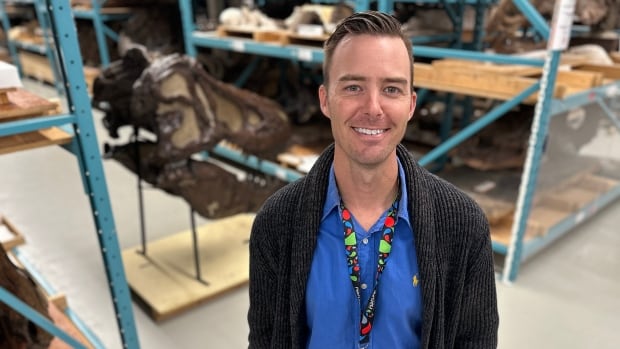
If this doesn’t give Hollywood licence to go even bigger in the next Jurassic Park movie, then I don’t know.
A new study that was hatched as a COVID-19 lockdown project by an Ottawa scientist and his British colleague suggests dinosaurs might have been even larger than previously thought.
Jordan Mallon, a palaeobiologist at the Canadian Museum of Nature, and David Hone of Queen Mary University in London recently released their findings in the scientific journal Ecology and Evolution. The pair focused on the Tyrannosaurus rex, though the results are meant to stoke thought about all dinosaurs.
They concluded that the largest member of the T. Rex family might have weighed as much as 15 metric tonnes, or more than 33,000 pounds — 70 per cent heavier than previous estimates and similar to a full school bus or two average male African elephants.
It also could have been 25 per cent longer at 15 metres.

Mallon and Hone looked at known T. Rex fossil figures and then used the dimensions of living alligators (given their large size and close kinship with dinosaurs) to extrapolate via computer modelling how big the largest T. Rex might have been.
Their methodology was dictated by the relative scarcity of accessible T. Rex fossils compared to other dinosaur species; by itself, that small sampling is unlikely to reflect the largest T. Rex that roamed the Earth.
But based on past discoveries of giants from some modern animal species, “there must have been larger dinosaurs out there that have not yet been found,” the study points out. Hence the comparison with gators.
It’s also just fun to think about a 15-tonne T. Rex, Mallon said.
“It’s such a large animal to begin with … T. Rex stands to teach us something about the limits of what it takes to be such an animal,” he said.
“Do they collapse under their own weight? Could such a big animal get enough food on the landscape to sustain itself?”
A useful new tool
Thomas Carr, the director of the Institute of Paleontology at Carthage College in Kenosha, Wis., says Mallon and Hone’s hypothesis provides a useful upper-limit benchmark for comparing future fossil discoveries.
“What we think is the maximum size for any dinosaur species is almost certainly wrong simply by virtue of the incompleteness of the fossil record,” Carr said.
The growing number of fossils hoarded by private collectors are “really no help,” he added.
“Who knows? Maybe among those privately owned fossils is the test of Jordan and David’s hypothesis.”







